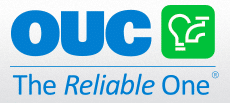OUC's low income program is projected to reach less than 1% of eligible customers. Energy savings for Orlando's families must be part of the City's clean energy plan.
George Cavros | April 29, 2020 | Energy Efficiency, Energy Policy, FloridaNo family should be forced to choose between paying their energy bill and purchasing basic needs like food and medicine. The unprecedented threat and economic fallout from the coronavirus crisis is exacerbating an already high energy burden on hard-working families. The energy burden – faced by customers that spend a disproportionately higher percentage of their household income on power bills – is felt most acutely by low-income customers.
Unfortunately, the Orlando Utilities Commission (OUC) – the second largest municipal utility in Florida, and the 14th largest municipal utility in the country, is proposing an anemic low-income program that abandons its most vulnerable customers.
To its credit, OUC has provided short-term relief by halting utility disconnections due to nonpayment and providing other COVID-19 relief to customers. But the problem of unaffordable energy bills runs much deeper. That’s where investment in energy efficiency programs by OUC – especially in low-income efficiency programs – can help relieve its customers’ energy burden by reducing household energy use and saving money on power bills.

We’ve chronicled in previous blogs how OUC, along with several other Florida utilities, proposed “zero” for energy conservation goals last year to the Florida Public Service Commission. Fortunately for customers, the Commission stopped the backsliding on goals and required a number of utilities to meet higher levels of conservation. Now, as Florida utilities are putting forth plans to meet these requirements, one thing has become crystal clear: OUC’s plan, filed in February, abandons its low-income customers when it comes to helping them cut energy waste and save money on bills.
Only 73 Customers?
OUC’s program is especially troubling considering that it has one of the highest percentage of low-income customers of any large utility in Florida – at 33%. Yet it’s proposed low-income energy efficiency program, Residential Efficiency Delivered, is projected to reach a mere 73 customers per year. The meager scope of the program fails over 72,000 families in OUC’s territory with a household annual income of less than $35,000. The program, if it even gets full participation, will reach less than 1% of OUC’s eligible low-income customers over the next five years – making it the weakest program of any large Florida utility.

OUC is locally owned by the City of Orlando – a city that has publicly committed itself to achieving 100% renewable energy by 2050, becoming the most sustainable city in the Southeast, and addressing the “pressing environmental justice challenges in sensitive communities in the City of Orlando.” Concurrently, OUC is in the process of developing a resource plan to guide its long-term resource decisions. It’s well established that energy efficiency is the cheapest, quickest, and cleanest way to meet both energy demand and clean energy goals. Robust low-income programs are part of the solution, so one is left to ponder why the City’s utility would propose such an ineffective low-income efficiency program that leaves its most vulnerable customers behind.

There are other design features of the Residential Efficiency Delivered program that ensure its failure:
- OUC is the only large utility that restricts its low-income program to single-family homes – even though a majority of its customers live in multi-family dwellings.
- OUC also has the dubious distinction of being the only utility to make its low-income customers pay extra to participate in its low-income energy efficiency program.
- OUC appears to let all households participate, regardless of income, but prohibits low-income customers from participating if they have fallen behind on their OUC bills. Imagine having a low-income program that prevents the people who need the most help – those with the highest energy burden, or most unaffordable energy bills – from participating in the program designed to help low-income customers lower their utility bills.
Back to the drawing board
OUC can learn a lot from its peers in Florida. Duke Energy Florida, which projects reaching 5.6% of its low-income customers over the next five years, has developed a Neighborhood Energy Saver program that will deliver over four times more savings per participant than OUC’s program while reaching 5,000 households per year. Duke Energy Florida also has a second Low Income Weatherization Assistance Program that will provide even deeper savings.
Tampa Electric’s low-income program will reach 25% of its eligible customers – 6,500 customers per year over the next five years. So while Tampa Electric serves about 3.5 times more customers than OUC, its low-income program will help nearly 100 times as many low-income customers each year.
Clearly, OUC must rethink the design of its program so that it is scaled in both scope and depth to truly and effectively meet the need for hard-working families struggling to pay their bills. Given the City of Orlando’s commitment to clean energy, why would it allow its own utility to miss an opportunity to meaningfully integrate the lowest cost and cleanest resource – energy efficiency – into meeting its energy needs and clean energy goals? Why would it leave its most vulnerable customers behind as part of the solution?
It shouldn’t! It’s time to send OUC back to the drawing board.